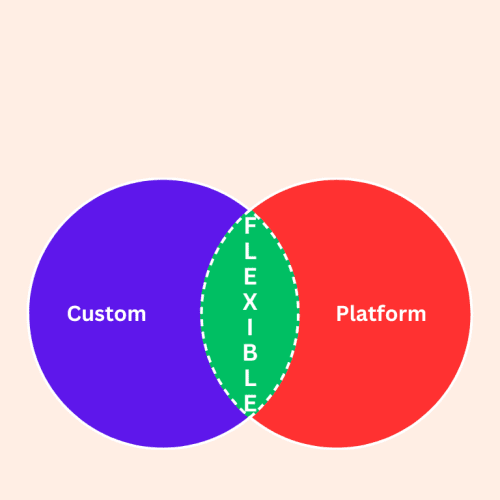
The age-old question, “Should I build or buy the solution I need for my rental company?” continues to puzzle business owners. Each option has its merits and demerits. Let’s delve into the factors you should ponder before making a decision on whether to invest in a new rental inventory management system.
Most rental businesses follow a standard workflow:
While there might be minor variations in your workflow, such as post-rental inspections and cleaning, this general pattern fits the majority of rental businesses. If your process aligns with this model, you likely don’t need a custom solution. Numerous “off the shelf” rental software providers cater to your requirements, ranging from niche options to comprehensive platforms designed for various rental businesses.
However, if you’ve conceived a groundbreaking concept that revolutionizes the rental model, potentially outshining existing solutions, it might be challenging to find a suitable option from established providers. In such cases, developing a bespoke solution could be beneficial. If you have sufficient financial backing and time, creating a unique system for your business could erect barriers for potential competitors. Consider the example of Uber vs. Lyft, where Uber’s early market entry forced Lyft to create its platform from scratch. If your rental idea possesses Uber or Lyft-scale potential, building a custom solution might be your best course of action.
When do you intend to start offering rentals to customers? Is it within this week, next month, or over a more extended period? Your timeline significantly impacts the decision to leverage an existing platform or invest time in building a tailor-made solution.
Businesses inclined toward custom development might not fully grasp the complexities involved. Creating a software solution can span months, if not years, before a dependable, adaptable system is ready for rental operations. The steps include:
For those preferring to prioritize business launch and growth over overseeing development, subscribing to an existing platform proves more viable. Reputable firms have already invested in a tested solution, enabling you to commence rentals within days or weeks, not months or years.
Opting for custom development almost always incurs higher costs than choosing a platform solution. The expenses encompass not only direct monetary outlays but also opportunity costs diverting resources from other strategic endeavors. Custom solutions require significant upfront capital, including down payments and retainers for development.
Alternatively, leveraging an available platform for your business launch or exploring customization options might be cost-effective. This route capitalizes on the platform’s industry expertise and may save substantial funds, even if you later decide to build upon the platform.
Like any substantial investment, maintenance costs pose a significant budgetary consideration. Technology evolves continuously, demanding software adaptations to remain relevant and functional. Neglecting updates risks rendering the initial investment obsolete.
Before committing to a custom-built path, assess the costs associated with ongoing maintenance. These include accommodating new technologies, enhancing security measures, and integrating new features. In contrast, a platform should proactively handle these updates as part of the license or subscription agreement.
Growth manifests in various forms, such as user base expansion, transaction volume increase, inventory growth, heightened customer traffic, and evolving requirements. When deciding between a custom system and a platform, evaluate how growth factors might impact your business.
Consider if your chosen solution can handle anticipated growth and the resources needed to support it. Growth expenses could correlate linearly, but there’s a possibility of encountering step-function cost changes due to increased infrastructure needs
Contemplating these five considerations when weighing a custom rental management system versus a rental business platform will guide you toward the optimal decision for your business. The saying that you can only pick two of the three—fast, cheap, or good—remains relevant. An option that’s fast and cheap might lack quality, while something fast and good won’t come cheap.
Ultimately, a thorough evaluation of these factors will assist you in making an informed choice that aligns with your rental business’s unique needs and growth aspirations.

Online booking, delivery, packages and everything else you need to manage and grow your rental company
Congratulations!
Check Your Email (Including your Spam Folder) to Activate Your Account